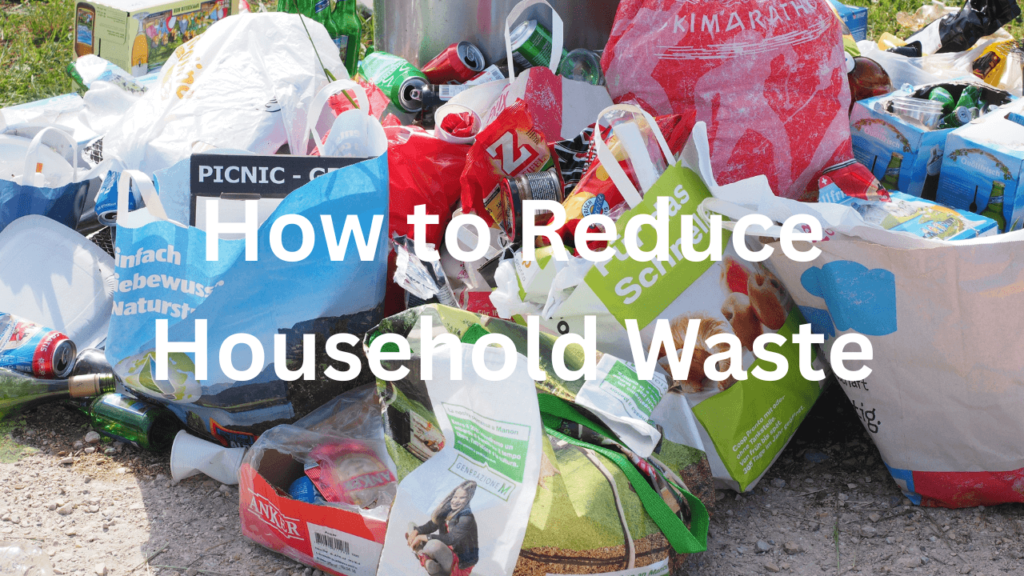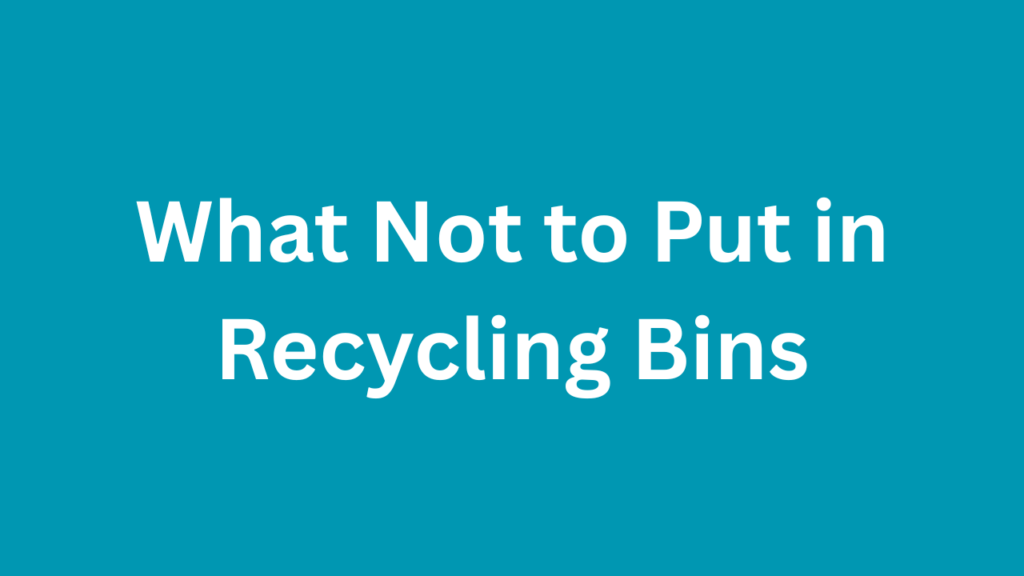Are your bins constantly full? Do you find yourself throwing away more than you’d like every week? If you’re wondering how to reduce household waste and want practical steps that actually work, you’re not alone.
The average household generates a surprising amount of waste—from food scraps and plastic packaging to electronics and paper clutter. But with a few smart changes, you can significantly reduce what goes to landfill. In this guide, you’ll learn how to reduce waste at home without sacrificing comfort or convenience.
By the end of this post, you’ll walk away with clear, sustainable strategies that save you money, simplify your home, and help protect the planet.
Why Reducing Household Waste Matters
Every item you throw away has a cost—not just to your wallet, but to the environment. Waste sent to landfill generates methane gas, a potent contributor to climate change. Meanwhile, manufacturing new products from raw materials consumes vast amounts of energy and resources.
Reducing household waste is not just an eco-friendly lifestyle choice—it’s a responsibility we all share.
Benefits of reducing waste:
- Lower bin collection fees
- Less clutter in your home
- A smaller carbon footprint
- A more mindful approach to consumption
1. Conduct a Home Waste Audit
Before you can reduce waste, you need to understand where it’s coming from.
How to do a simple waste audit:
- Over a week, take note of what you throw away.
- Categorize items (e.g., food, plastic, paper, textiles, electronics).
- Identify common culprits (e.g., excess packaging, spoiled food, single-use items).
This helps you target your biggest waste sources first.
2. Reduce Food Waste with Smarter Habits
Food waste is often the biggest contributor to household trash—and it’s totally avoidable.
Easy ways to cut food waste:
- Plan meals before shopping.
- Stick to a grocery list.
- Store perishables correctly (e.g., keep herbs in water, potatoes in a cool dark place).
- Use the “first in, first out” rule—eat older items first.
- Freeze leftovers or unused portions.
According to global data, a third of all food produced is wasted. Tackling this one issue can drastically reduce your household waste.
3. Embrace Reusable Alternatives
Single-use items like plastic bags, bottles, and paper towels generate unnecessary waste.
Swap these disposables for reusables:
- Reusable shopping bags
- Stainless steel or glass water bottles
- Cloth napkins and cleaning rags
- Beeswax wraps instead of cling film
- Silicone lids or containers for leftovers
Once these reusables become habit, you’ll wonder how you ever lived without them.
4. Set Up a Home Recycling Station
Many people want to recycle more—but confusion and inconvenience hold them back.
Tips for effective home recycling:
- Use clearly labeled bins for paper, plastic, metal, and glass.
- Rinse containers before recycling.
- Learn which items are accepted in your local program.
- Keep recyclables dry and clean to avoid contamination.
If your community offers curbside recycling, follow their sorting guidelines. If not, locate your nearest recycling depot.
5. Compost Your Kitchen and Garden Waste
Composting is a fantastic way to reduce food waste and enrich your garden naturally.
Compostable items include:
- Vegetable and fruit scraps
- Coffee grounds and tea bags
- Eggshells
- Yard trimmings and leaves
- Shredded cardboard and paper (uncoated)
Avoid meat, dairy, and oily food unless you’re using a closed composting system. You can even try a countertop compost bin if you’re short on space.
6. Buy in Bulk and Choose Minimal Packaging
Packaging waste—especially plastic—builds up quickly. You can reduce this by making smarter shopping choices.
Shop waste-smart:
- Buy in bulk to reduce packaging waste.
- Bring your own containers or bags when shopping at refill stores.
- Choose items with recyclable or compostable packaging.
- Avoid individually wrapped snacks and single-serve portions.
If buying in bulk isn’t available locally, focus on buying larger containers instead of many small ones.
7. Repair Before You Replace
In today’s throwaway culture, it’s easy to discard things at the first sign of wear. But repairing items not only reduces waste—it often saves money.
Items worth repairing:
- Clothes (sew buttons, fix zippers)
- Small appliances
- Furniture (tighten screws, repaint)
- Shoes and bags
- Electronics (if repair is safe and cost-effective)
Some cities offer repair cafés—volunteer-run events where experts help fix common items for free or for a donation.
8. Donate or Sell Unwanted Items
Decluttering your home? Instead of dumping everything in the bin, find new homes for your unwanted goods.
Great options for reuse:
- Donate to local shelters, charities, or secondhand shops
- Sell on community marketplaces like Facebook Marketplace or Craigslist
- Host a swap event with friends or neighbors
You’d be surprised how many people are looking for exactly what you’re getting rid of.
9. Use a Skip Hire Service Wisely
If you’re doing a major cleanout or renovation, hiring a skip can help—but be responsible.
Smart skip hire practices:
- Choose a provider that sorts and recycles waste.
- Separate materials before disposal (wood, metal, cardboard).
- Avoid tossing hazardous waste—check what your skip hire allows.
This is especially important for large or bulky items that can’t be recycled through regular household bins.
10. Reduce Paper Waste
While paper is recyclable, it’s better to prevent the waste in the first place.
Ways to cut down on paper:
- Switch to digital bills, statements, and subscriptions
- Use a reusable notebook or planning app
- Opt out of junk mail and catalogs
- Print only when necessary—double-sided when you do
You can also repurpose paper for crafts, note-taking, or kindling.
11. Say No to Junk Mail
Unwanted flyers and brochures can pile up fast.
Steps to stop junk mail:
- Place a “No Junk Mail” sign on your letterbox
- Unsubscribe from promotional mailing lists
- Contact marketers or catalog distributors directly to remove your address
Reducing incoming paper means less to sort and recycle later.
12. Choose Sustainable Brands and Products
Consumer choices matter. Support companies that prioritize the environment.
Look for:
- Products made from recycled materials
- Companies with take-back or refill programs
- Biodegradable or compostable goods
- Certifications like FSC (for paper), GOTS (for organic textiles), or B Corp
Sustainable buying habits reduce demand for wasteful production practices.
13. Reuse Packaging Materials
Instead of throwing away boxes, jars, and containers—repurpose them!
Creative reuse ideas:
- Use jars to store dry food, nuts, or DIY cosmetics
- Turn cardboard boxes into drawer organizers
- Keep padded envelopes for future mailing
- Reuse gift bags and wrapping paper
You’ll save money and reduce your environmental impact in the process.
14. Teach Your Household the Rules
Reducing waste is a team effort. Get everyone on the same page.
How to involve others:
- Post signs above bins to show what goes where
- Assign kids recycling “monitors” as a fun chore
- Hold a monthly “declutter and donate” day
- Celebrate milestones like a full week with zero food waste
The more people are involved, the easier it becomes to stick with the habit.
15. Set Waste Reduction Goals
Tracking your progress makes the effort more rewarding.
Ideas:
- Reduce your general waste bin to one bag per week
- Compost 90% of your food scraps
- Eliminate single-use plastics from your bathroom
- Donate five unused items each month
Keep a visible checklist or journal to stay motivated.
Real-Life Example: A Family’s Zero Waste Journey
One family of five set out to reduce their weekly waste output. Within six months, they went from filling two large trash bags per week to just one small bag.
How?
- They replaced single-use items with reusables
- Started composting in the backyard
- Switched to refillable cleaning products
- Taught their kids how to sort waste properly
- Donated clothing and toys monthly
Their home became tidier, more efficient, and more sustainable—with zero regrets.
FAQs About Reducing Household Waste
What are the most effective ways to reduce household waste?
Focus on reducing food waste, switching to reusables, composting, and recycling properly. Start small and build consistent habits over time.
How can I reduce plastic waste at home?
Avoid single-use plastic items, buy in bulk, use reusable containers, and choose products with minimal or recyclable packaging.
Is composting worth it for small households or apartments?
Absolutely! Small compost bins or countertop systems are perfect for apartments. You can even use community compost programs if available.
What should I do with things that aren’t recyclable or compostable?
First, see if you can repurpose or donate them. If not, dispose of them responsibly through your general waste service or a special collection point.
How can I encourage my kids to reduce waste?
Make it fun! Use games, rewards, and responsibility-sharing to teach them about recycling, composting, and reducing consumption.
Final Thoughts
Learning how to reduce household waste isn’t about perfection—it’s about progress. Even one less bin bag per week makes a difference over time. These tips are designed to be practical, achievable, and rewarding, no matter your lifestyle or household size.
Start small. Stay consistent. And enjoy the benefits of a cleaner home, a clearer conscience, and a healthier planet.



